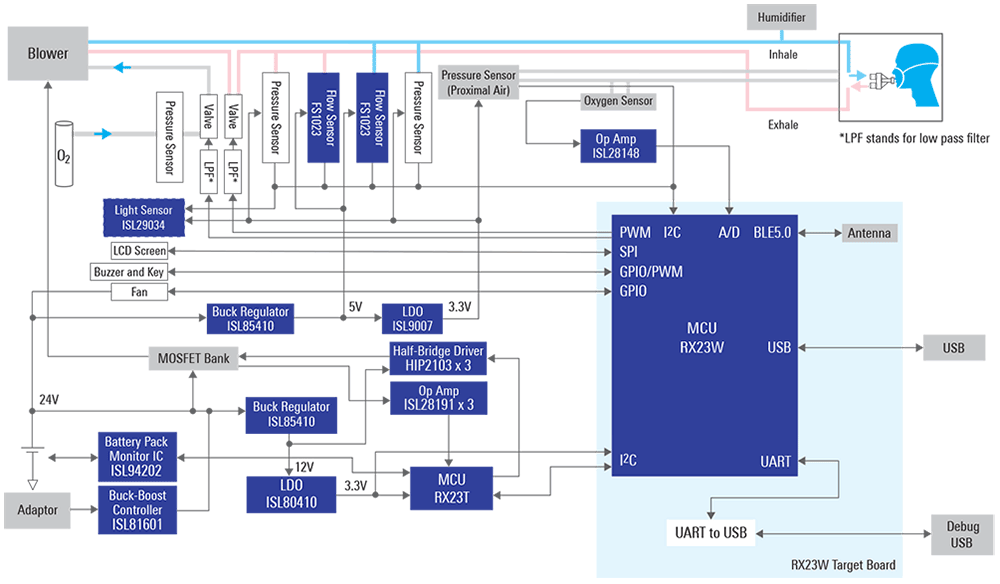The COVID-19 pandemic has created havoc globally, putting more and more people in hospitals. Doctors, universities, and corporations from all over the globe have united in offering solutions to shortfalls created by this pandemic.
Renesas is also helping this cause by providing a modern ventilator solution capable of operating in home and hospital settings. The solution is a positive pressure ventilator similar to an open source ventilator.
The ventilator controls the tidal volume and mixture of the gas delivered to the patient while also monitoring the patient’s status. The ventilator is portable and can be used with or without gas tanks. A humidifier can be connected to the intake path to soothe the patient’s breathing. This makes it more comfortable for a patient that is connected to the ventilator for long durations.
Renesas has a broad portfolio that addresses many electrical functions of the ventilator signal chain. The solution consists of a sensor board and a motor control board. Each board has an MCU to control its specific task, as well as monitor the status of the connecting board. The solution provides a system of checks and balances that are favorable for regulatory approval and patient safety. The solution is designed with the intent that the hardware and software pass regulatory approval (if needed).
The motor control board controls circuitry that charges and monitors the battery and system state. The RX23T is an efficient motor control MCU that drives the inverter controlling the blower air delivered to the patient. The MCU supports both sensor and sensor-less synchronous motor driving solution. The MCU monitors a semi-autonomous battery management IC. The battery management IC controls the primary power FETs to the system and always fails in a safe condition. A power supply provides power to the charger and plugs into an outlet. The charger can be configured to charge a battery or be the main supply for the solution.
The motor control board connects to the sensor board through a communication port and an interrupt. The MCU for the sensor board is the RX23W. The RX23W is a BLE 5.0 single IC wireless MCU. The sensor board monitors the intake and exhale of the patient through a series of pressure and air flow sensors. Based on the concentration levels and flow rates, the RX23W adjusts valves for gas concentrations or alerts the motor to stop blowing when the patient tries to exhale. The BLE capabilities of the MCU allow remote displays on a mobile device such as a tablet. This capability allows a medical professional to monitor several patients at once. As a backup, an LCD screen is connected to ensure that the system status is being properly communicated.
Figure 1 - Ventilator System block diagram:

Visit the winning combinations page to see more solutions that help our customers accelerate their designs to get to market faster.
